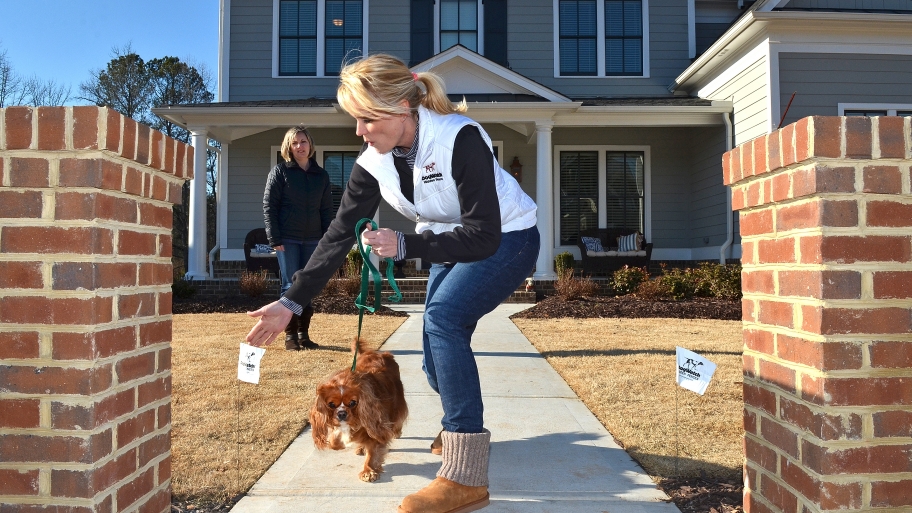A few decades ago, it was normal to let your dog roam freely throughout the neighbourhood and most people did not have a fenced yard. Most dogs were well socialised and it was no big deal if the neighbour’s dog was in your yard. However, sometimes dogs would chase cars, fight with other dogs, get pregnant and bite people – or perhaps get hit by cars or get lost.
These days, our furry canine friends are kept responsibly contained within our properties. Keeping your dog contained with a fence, along with neutering and vaccinating them, ensures that they will have a longer, safer and healthier life. As well, it is often a legal requirement. If your dog is left to roam freely, they might be picked up by an animal control officer or you might be liable if they bite someone or if they damage someone else’s property. You can find fencing supplies at your local Richard Williams.
So, when it comes to installing a fence to contain your dog, what important things should you keep in mind?
Tips for Building a Fence to Contain Your Dog
- It is important to make sure that the fence is high enough to contain your dog. Consider the size of the dog and whether or not they are able to jump or climb. Most small dogs will be fine with a four or five foot fence, but larger dogs may require a six foot fence so consider this when buying North Wales fencing supplies.
- Be aware of whether there is something that your dog can climb up on in order to jump over the fence. For example, if the dog house or a wood pile is close to the fence they may be able to climb up on it and jump over it.
- Also, another way that dogs escape from yards is by digging underneath the fence. Make sure that the fence extends deeper into the ground and consider placing concrete or stones around the perimeter to inhibit digging.
- Sometimes dogs will try to chew on wooden fences, so consider spraying them with vinegar or another bad tasting substance so that you can train them to stay away.
- If you are worried about your dog jumping over the fence, you could consider installing a roof that will come inward at the top of the fence at a 45 or 90 degree angle.
- Another option is to install pieces of PVC pipe along the top of the fence suspended on wires, so that they will spin when your dog tries to grab onto the top of the fence and pull itself over.
- Always be diligent when checking for loose or weak boards or faulty gates.
- Sometimes a dog in a fenced yard can develop the undesirable habit of running along the fence line, barking and being quite aggressive to people and dogs walking by. He thinks he is in guard dog duty and is alerting you to any potential intruders. A solid fence rather than a chain link fence can reduce this, as the dog won’t see people and other dogs walking by.
What About Electric Shock Fences?
You may have considered the type of invisible fencing that will give your dog an electric shock if they leave a certain area of the property. Many people seek this type of fence because it will not obstruct your view. However, there are a lot of disadvantages to this option. First of all, the receiver is very expensive and someone can walk right into your yard and steal it from your dog’s neck. Also, the fence doesn’t keep people and other dogs out of your yard, so your dog is vulnerable to teasing and attacks from people and other dogs. Sometimes a dog might get so distracted (like when chasing a squirrel) that they will forget the pain and run right through the system, then they will not want to come home because they know they will get shocked. So, consider this before choosing this option.
Fencing In Your Dog
One important thing to remember is that if you leave your dog in the fenced yard all day long with no exercise and interaction, he will become stressed out, bored and anxious and will be more likely to bark or try to escape. Make sure that you are taking your dog for a walk at least once every day and that you are not leaving them outside all day long. If you are going to be out for several hours, it is best to leave your dog indoors with plenty of toys to play with and things to do.
